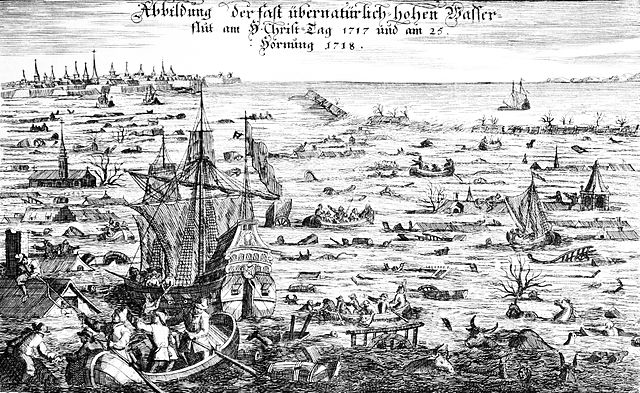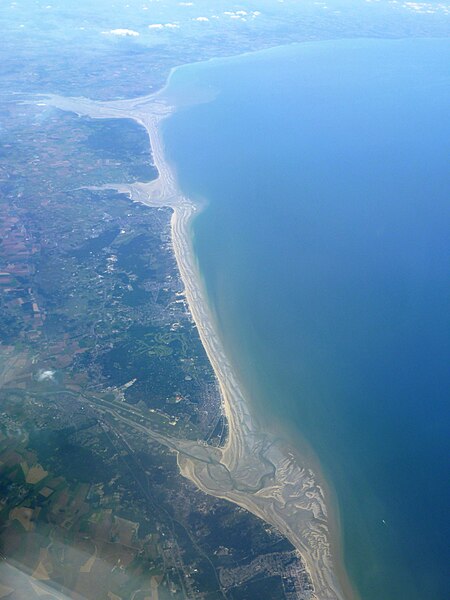Storm tides of the North Sea
Storm tides of the North Sea are coastal floods associated with extratropical cyclones crossing over the North Sea, the severity of which is affected by the shallowness of the sea and the orientation of the shoreline relative to the storm's path, as well as the timing of tides. The water level can rise to more than 5 metres (17 ft) above the normal tide as a result of storm tides.
Netherlands storm tide, 1809
The Burchardi flood in October 1634
The Christmas flood of 1717
The English Channel, also known as the Channel, is an arm of the Atlantic Ocean that separates Southern England from northern France. It links to the southern part of the North Sea by the Strait of Dover at its northeastern end. It is the busiest shipping area in the world.
English Channel
Osborne House, the summer retreat of Queen Victoria on the Isle of Wight. Starting from the late 18th century, settlements on and around the English Channel coastline in England grew rapidly into thriving seaside resorts, bolstered by their association with royalty and the middle and upper classes.
The Strait of Dover viewed from France, looking towards England. The white cliffs of Dover on the English coast are visible from France on a clear day.
Three French river mouths. Top to bottom: the Somme, the Authie and the Canche







